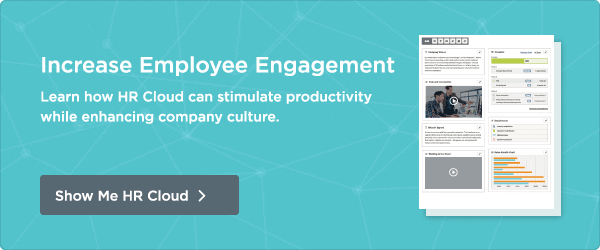Recruiting & Company Culture - How One Affects the Other


 Cut onboarding time
by 60%—here's the
Ultimate Checklist
that helped do it.
Cut onboarding time
by 60%—here's the
Ultimate Checklist
that helped do it.

Think back to your school days and choosing teams for kickball. Team captains begin picking their friends or those more popular or athletic. This process didn’t mean that the team would win; it just meant they would have more fun and maybe look good doing it. This is, obviously, not an effective blueprint for how to hire good employees. Unlike the game of kickball, the goal in recruiting talent is not to hire the “best looking” team. The focus is on hiring the right people for your culture as well as your workplace needs.
Typically, you will hire against a job description and look for candidates with the right skill set. But you’re also looking for fit. How do you recruit for both skill and fit, and avoid a uniform workforce?
“We all work late and so should you.”
In a high-performance culture, employees typically work long hours, don’t have much of a life outside of work, and the focus is on keeping the clients happy. The company may say that they value diversity of thought and experience, but if the culture is supporting and encouraging a “We all work late and so should you mentality,” and hire to this mindset, you could be overlooking really great talent. Just because you work long hours doesn’t mean your employee population is the most efficient or innovative at creating opportunities for business development.
For example, the Millennial generation is known to have a great work ethic, are leaders in their field, and are typically very efficient at getting things done. They are high performers by their own right. But if you have your own definition of “high performance,” you may be weeding out great candidates. The best way to avoid a “fit” misunderstanding is to assess your culture and prepare a list of behavioral questions that will help you determine if a candidate has a similar work ethic.
Blending into the Culture
Building a homogenous workforce can be boring and limiting. However, you do want a candidate that can blend in and enhance your culture. —Someone who “fits in” yet challenges the status quo. Behavioral questions are a great way to determine skill and fit. For example, if your organization thrives on team work, you’ll want to encourage recruiting and leadership staff to consider the following questions:
• Tell me about the most difficult person you have ever worked with or for and describe your contribution to the tension in the relationship.
• Tell me about a time when you were a member of a team and the team didn’t meet its goals. What was your part?
• Describe how you went about learning and then fitting into the organization’s culture in your previous job?
• What has been your greatest success (or failure) in fitting in to an organization’s culture?
• Describe for me a situation in which you were in a group that had personality conflicts. What was your contribution?
Understanding culture can help you to form behavioral questions that will help you determine not only skill level but fit as well. And I don’t mean exact fit. No one is an exact replica of someone else. However, you can find a candidate that has a similar work ethic and is willing to work towards a common goal.
Your Recruiting Goals?
• Understand your culture. Define what you need and how to successfully meet your goals.
• Know your candidate. People look good on paper. They can look good in person. Heck, they might even do a decent job. But if you want the best candidate, include skill set, experience, personality and work ethic in the interview mix.
• Recruiting is everyone’s responsibility. Employee referrals, job fairs, networking events and even your Twitter page should reflect a positive and engaging work environment that thrives on good work.
Fit is not shoe size. Fit is not just personality. Fit is working to attain the same goals and shooting for success.
How have your recruiting and interview practices affected your best cultural fit?
Let us know in the comments!

Keep Reading
Specialized Onboarding Software for Healthcare to Reduce Admin Work and Scale Hiring Fast
Imagine this: a women’s health clinic hires two new nurses, only to lose both within
A Closer Look at HR Cloud-ADP Integrations
ADP is the gold standard for payroll and core HR management. But if you’ve ever tried to
Retention Reset: How to Keep Your Best Talent in 2025
More employees are walking away from their jobs in 2025 not just for better pay, but for
Like What You Hear?
We'd love to chat with you more about how HR Cloud® can support your business's HR needs. Book Your Free Demo

Build a Culture of Recognition. Boost Engagement. Guaranteed.
Workmates empowers employees to stay informed, connected, and appreciated—whether they’re on the front line, in the office, or remote. Recognition drives 12x higher engagement.Trusted by industry leaders in every sector




Cut Onboarding Costs by 60%.
Take the confusion and follow-ups out of onboarding with automated workflows, digital forms, and structured portals—so new hires ramp faster 3X quicker.Trusted by industry leaders in every sector





